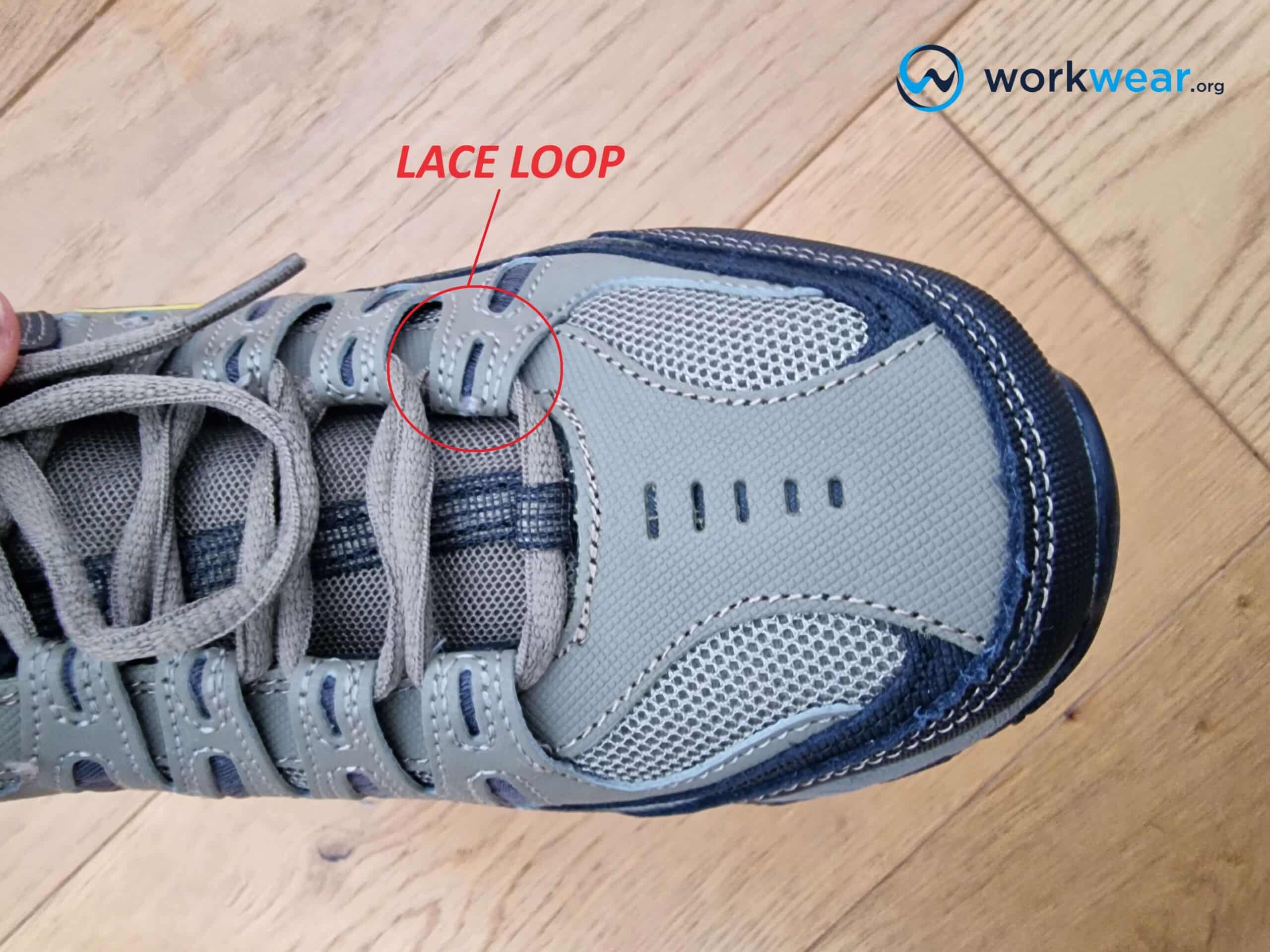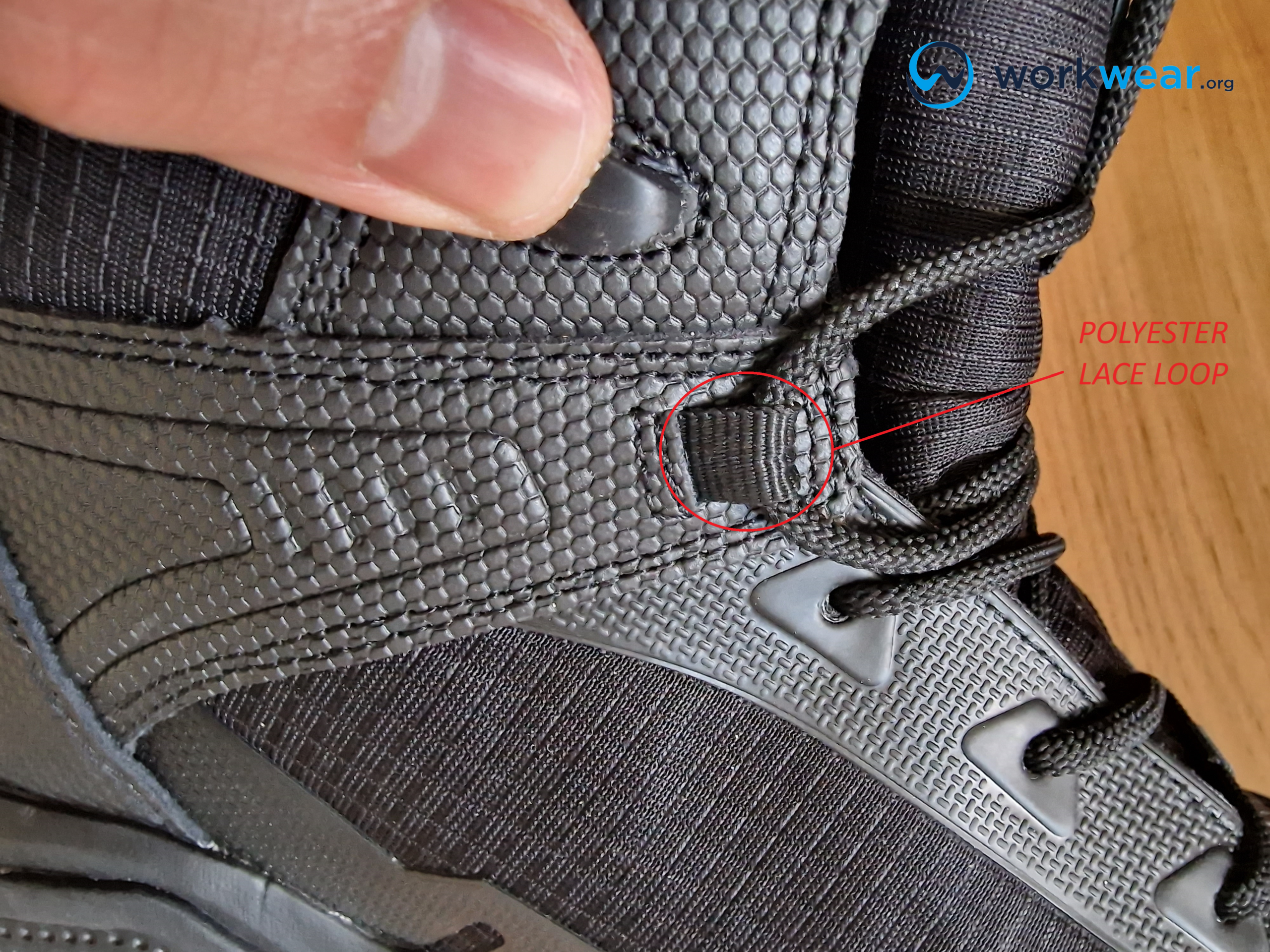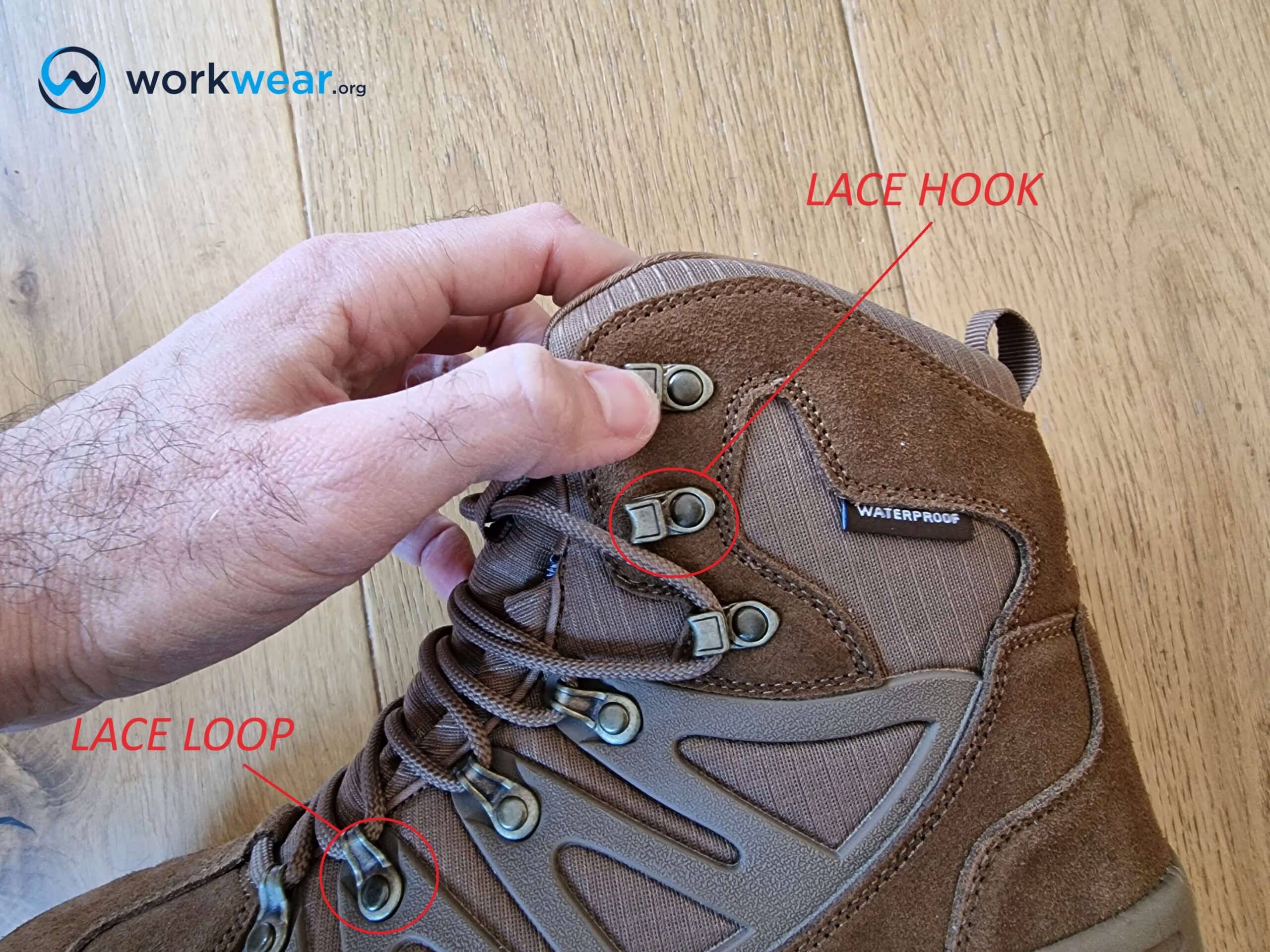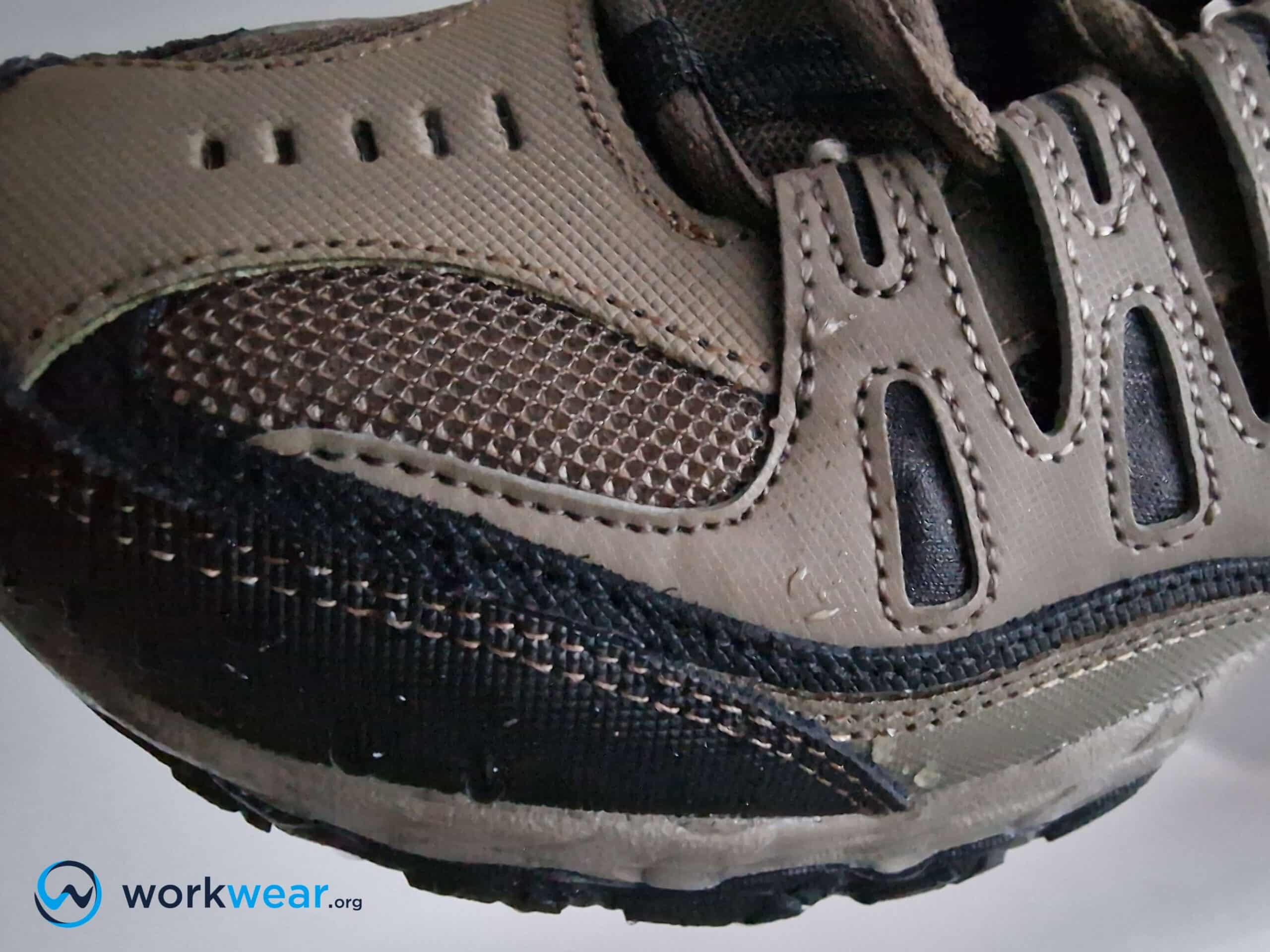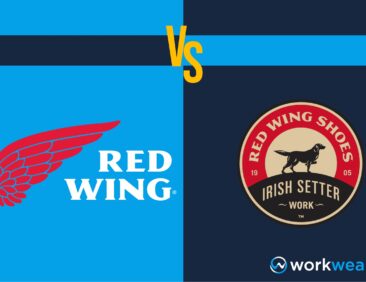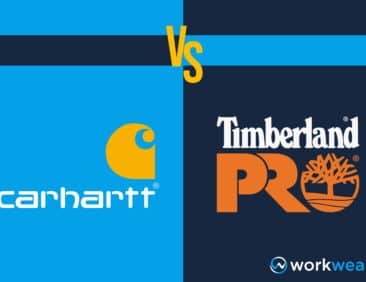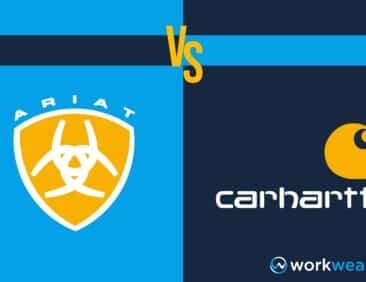What are Lace Loops?
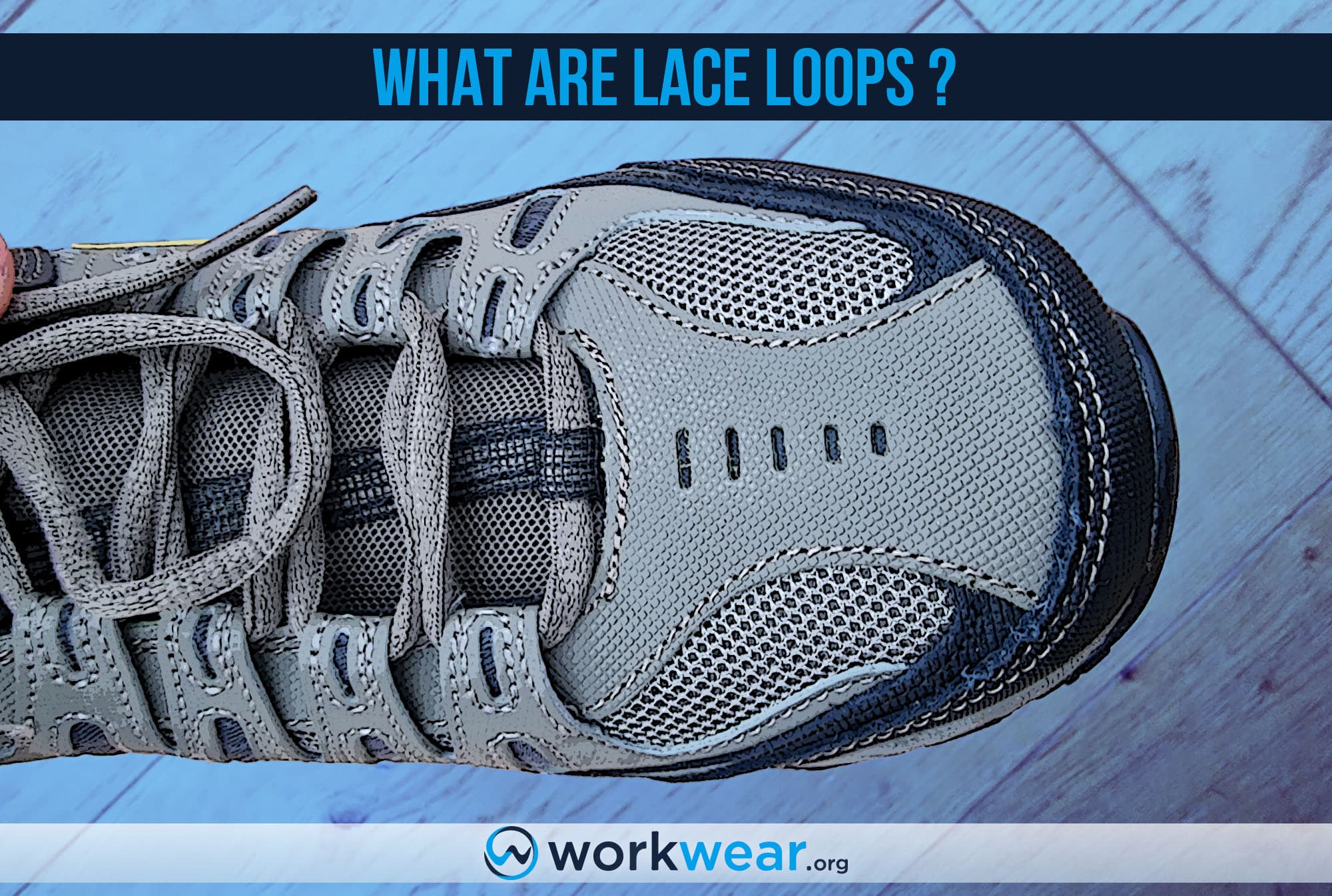
Did you notice that not all lace-up work boots have the same lacing styles? This isn’t limited to the type of laces used because sometimes even the parts where they’re looped through are different, too. Have you heard of lace loops? I’m here to spotlight these footwear sections, helping you better appreciate what they do and how they differ from similar components of different materials.
What are Lace Loops?
Lace loops are just like eyelets in that they have the same role of holding the shoelaces in place – even though they don’t look the same. They’re typically made of a soft material (instead of metal or hard plastic) folded to make a loop where the shoelaces go through. Also called webbing eyelets, lace loops are usually fitted into casual shoes and sneakers, but sometimes they’re seen in work boots with heavy-duty designs. Lace loops of the same color as the upper blend seamlessly with the footwear, but they can also be used as accents if their shades contrast with the boots or shoes’ main colors.
What Materials are Used for Lace Loops?
Lace loops are typically made with soft, pliable materials. Unlike metallic (or hard plastic) eyelets, lace loops can easily flex and be handled to accommodate the placing of shoelaces. The materials used for lace loops mostly depend on the footwear’s design and upper materials. For example, leather work boots typically have lace loops made from the same leather material to create a seamless look. Meanwhile, sneaker work shoes and boots often have lace loops made of nylon or cotton that are as flexible as the mesh or fabric uppers. It’s worth noting that the type of material used directly impacts the lace loops’ durability. High-quality leather and abrasion-resistant nylon can be expected to stay sturdy longer than suede and thin cotton lace loops.
What Work Boot Styles Use Lace Loops?
Lace loops are commonly seen in footwear with sporty profiles, mostly in sneaker work shoes and boots. They give the footwear an athletic vibe, contributing to the versatile appeal suitable for work and leisure activities. Lace loops are sometimes closely associated with soft-toe sneaker work boots and shoes, but they can also be built into safety toe work footwear for more demanding settings.
Advantages of Lace Loops
Lighter than metal eyelets
Lace loops are made of fabric and are generally more lightweight than metallic or plastic eyelets. Even if they take up only a small portion of the upper, eyelets or lace loops still contribute to the overall weight of the footwear. In this case, fabric lace loops weigh considerably less than their plastic or metal counterparts. They help work boots or shoes maintain their reduced weight profiles for enhanced comfort without the extra bulk.
Less pressure on the foot
Metal or plastic eyelets can press uncomfortably on top of the foot. The problem can sometimes worsen if the laces are pulled to tighten the boots or shoes. Lace loops don’t have this issue because they don’t have hard parts that can dig into the foot. They put significantly less pressure even if the laces are pulled tight, protecting against discomfort even with hours of continuous footwear use.
Don't affect mobility and comfort
Walking naturally and comfortably with hard plastic or metal eyelets digging into the foot can be difficult. Footwear options that use lace loops typically don’t cause this problem. Lace loops do their role of securing the shoelaces, but their soft material doesn’t put painful pressure on the foot. They don’t interfere with the natural foot motion or compromise comfort.
More casual look
Lace loops lend a casual vibe to work boots and shoes. They don’t make work shoes and boots look too industrial, unlike metallic eyelets that can give the footwear an aggressive, heavy-duty look. Fabric lace loops either blend in with the rest of the upper or add a touch of color in a low-key way, so the work footwear retains its casual vibe.
Keep the footwear metal-free
Lace loops are made with pieces of fabric and don’t have metal components. They ensure that the footwear remains metal-free without compromising their ability to hold the shoelaces in place. Work boots and shoes with lace loops (and non-metallic designs) are ideal for work environments with metal detectors because they won’t automatically trigger these sensors – which is an issue when using footwear with metal parts.
Disadvantages of Lace Loops
Typically, not as sturdy as plastic or metal eyelets
Lace loops are typically weaker and less durable than eyelets made from more rigid materials (such as metal or plastic). Fabric lace loops are more prone to tearing, especially if caught on objects in the surrounding area. If the fabric isn’t strong enough, it can also fray when exposed to regular friction as the laces repeatedly move through the loops with constant footwear use. In this case, lace loops may be among the first (if not the first) parts of the work boots or shoes to be damaged.
Laces can be challenging to push through
Lace loops hold the shoelaces in place, but often, they’re not smooth enough to allow the laces to slide in effortlessly. Unlike plastic or metal eyelets with smooth surfaces, fabric lace loops typically cause more friction with the shoelaces. This results in the laces sometimes catching on the loops or, at least, not going through as easily as with plastic or metallic eyelets. While this may not seem like a big deal, it can be annoying if you’re in a hurry to put on your work boots or shoes.
Pros
- Weigh less than metal eyelets
- Don’t press uncomfortably into the foot
- No negative effect on foot mobility and comfort
- Look more casual/less aggressive than metal hardware
- Maintain a metal-free structure
Cons
- Not as strong and durable as metallic or plastic eyelets
- Laces may not go in as smoothly as they do through plastic or metal eyelets
Personal Testing Experience
Here are my observations while using high-quality work footwear options with lace loops. The Larnmern Steel Toe Work Boot looked like basketball shoes but had safety features to protect the foot in hazardous surroundings. Steel toe protection blocks impact and compression threats that can potentially cause serious foot injuries. The boot also had a puncture-resistant sole that stopped sharp items from penetrating from the bottom. ESD wires in the insole released static electricity to the ground to reduce the risk of an electrical shock. The lace loops blended with the upper and added a touch of color to boost the sporty vibe. However, these fabric loops – and the rest of the upper – didn’t feel very strong and durable.
On the other hand, the Skechers Afterburn – Memory Fit Work Shoe turned out to be one of the most lightweight, non-safety work shoes I’ve tried. The thick memory foam insole worked with the shock-absorbing midsole to deliver outstanding comfort even while walking for hours. The upper’s synthetic lace loops feature is available in more than ten colorways to cater to different style preferences. The thick outsole securely gripped unstable ground but flexed well and effortlessly moved with each step. However, it became quite slippery on the ground surfaces.
Conclusion
Lace loops are important parts of a footwear’s lacing system. Even if they don’t look like regular metal or hard plastic eyelets, they work the same by securing the laces in place. They’re lighter and don’t press painfully into the foot like rigid eyelets. They’re ideal for metal-free footwear and do not negatively affect foot movement. It’s worth noting that lace loops don’t allow the laces to go through as smoothly and are typically not as sturdy as eyelets made of hard plastic or metal.
FAQ's
- Are lace loops waterproof?
- They can be if the materials they’re made of are treated with a waterproof or water-repellent coating to stop liquid absorption.
- Can torn lace loops be repaired?
- Some of them can be repaired – although the strength and quality may not be the same, especially if the stitching is of low quality.
- Do lace loops last long?
- It depends on the material used. For example, lace loops with thick leather or heavy-duty nylon typically last longer than those with thin, flimsy fabrics.
- What’s the difference between lace loops and fabric eyelets?
- Lace loops are made with fabric and other non-metallic materials, forming a small loop where laces should go through. They’re attached to the top of the lacing system or the throat of the footwear. On the other hand, fabric eyelets are punched into the upper as part of the lacing system, just like plastic or metal eyelets are integrated into the structure.
